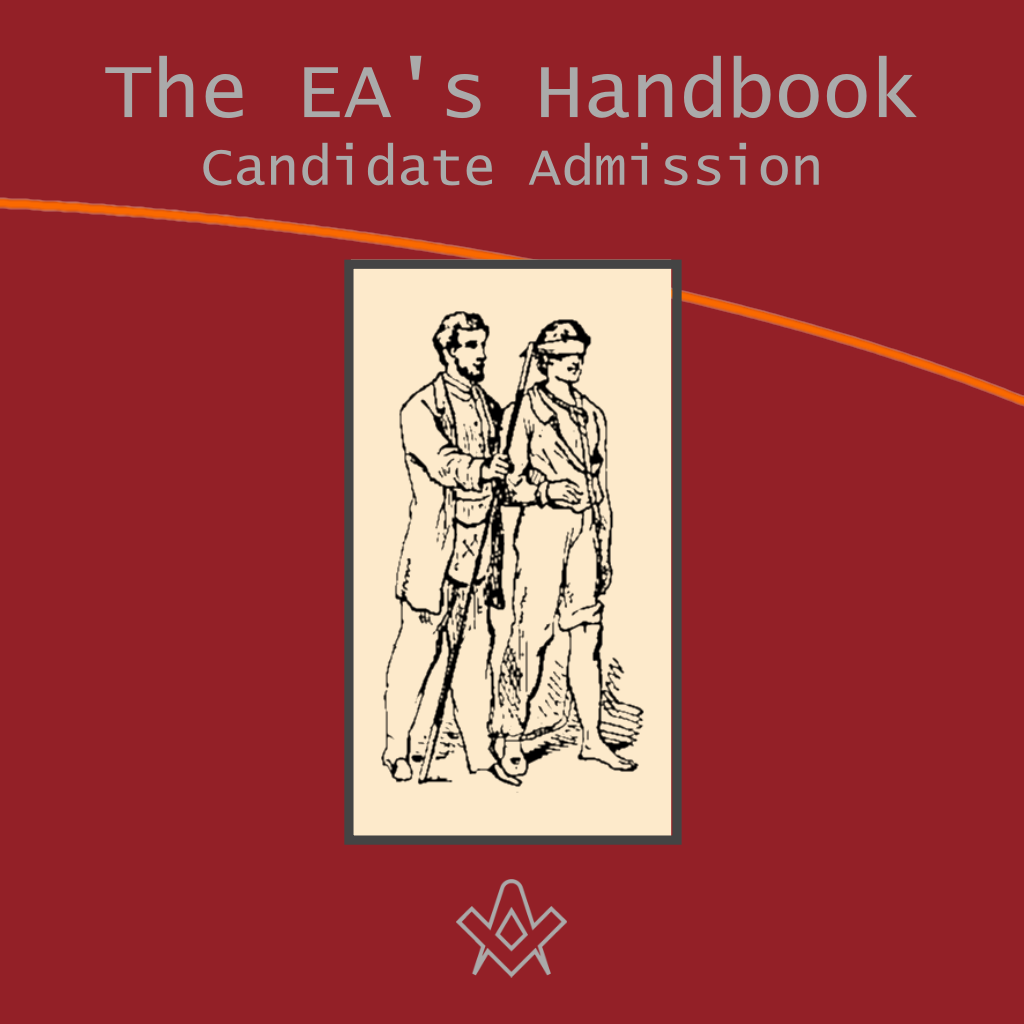Now our candidate enters and is received on a sharp instrument.
This signifies many things, one idea lying within the other. It reminds us of the pain we, as distinct from our mothers, suffered when we entered this physical world.
It is a test of our courage and obedience. Probably in olden days blood was drawn, as a sacrifice.
The candidate comes seeking for knowledge; self-restraint and quiet confidence should mark his bearing.
CHAPTER IV – Candidate Admission
In all primitive initiatory rites most painful tests are applied, and if the candidate does not bear them with courage he is rejected, and told that henceforth he is to dress as a woman and will be treated with contempt by the men of the tribe.
We note that the instrument is a Latin cross, the age-old symbol of suffering, and this is the only place in the Lodge where the candidate sees this cross, (e.g. when it is shown him later) though Master Masons may realise that there does come a time when he treads the Way of the Cross of suffering.
The use of a Latin Cross as the Sharp Instrument is peculiarly significant, for it is associated with pain and the danger of death, and tells us, in symbolic language, that the way of life is the path of suffering, and begins with the threat of death and ends in death itself: but by this hard road we draw nearer to the object of our quest.
Next the candidate kneels while the blessing of Heaven is invoked.
This needs no explanation, for he is about to start on The Quest and needs Divine help.
But the phrase;
“Relying on such sure support, you may safely rise and follow your leader, . . . , for where the name of God is invoked we trust no danger can ensue”.
This seems pointless in Emulation working, for the danger was at the door and is passed.
At Leeds (Yorkshire, England), however, they have a working which is, they say, derived from the Old York ritual, and it does explain this passage.
I saw this ceremony at Alfred 306, Leeds. The candidate was brought in hood-winked and bidden to kneel, and after the prayer,
The W.M. said:
“Mr. Brown it is but fair to tell you of the perilous position in which you are now placed. Before you stand one with a drawn sword in his hand, pointed at your naked left breast, and behind you one holds the end of the cable tow which is about your neck; in this position of difficulty and danger, in whom do you put your trust?”
Answer:-“In God. “
W.M;
“Right glad am I to see your faith is so well founded; relying, etc.”
Here you see the candidate is in danger. Next the candidate is taken round with the Sun, for this is the road of life , and in all ancient religions on entering a temple a man had to follow this path.
In Burma to this day, you are expected to pass round the pagoda in this manner.
The words are:
“Brethren in the North, East , South and West will take notice. “
It is clear therefore that emphasis is laid on the fact that the candidate is following the path of the Sun, for otherwise why not employ the more usual phrase, “North, South, East and West?”
Now the Swastika, which may be regarded as the “lost sign” in Freemasonry [1] indicates the path of the Sun and is the emblem of life.
Whereas the Swastika is the emblem of the life beyond the grave, for, according to ancient symbolism and eschatology, the departed soul went through the underworld the reverse way, just as the Sun was supposed to do, e.g. West South East North.
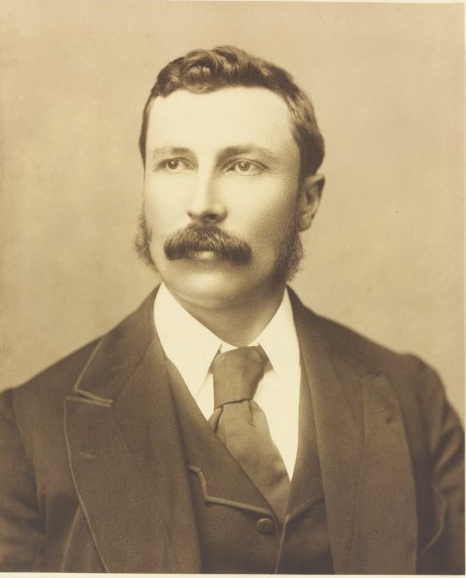
John_Cockburn_(Australian_politician)
IMAGE LINKED: wikimedia Attribution 4.0 International (CC BY 4.0)
This then, is the road of the Spirits. Thus the candidate starts on the symbolic.
First suggested by WBro. Sir John Cockburn. journey of life, and in some of the eighteenth century rituals there is evidence that the way was made hard and difficult, to symbolise the trials and tribulations we meet with in life , particularly if we strive to attain to the Light.
This lesson is still taught in certain foreign rituals.
In “Freemasonry and the Ancient Gods”, I have discussed the probability of the theory that the Swastika was once used in our Lodges to represent God, as it still is in the operative lodges, and have shown that a square-a-gamma, the Greek “G,” and therefore that the fourfold gamma represents the four letters of the Hebrew alphabet which denote the sacred name of God.
I refer again to this point later, and so will content myself with saying that in an operative lodge the Swastika if formed of four gallow-squares, one of which always rests on the open volume of the Bible, while the other three belong to the three Grand Master Masons, and are placed by them on the Bible before opening the Lodge, in such a way as to form a Swastika.
Thus even to-day in the manner of our progress round the Lodge we are reminded of that age-old symbol, which is found all over the world, *First suggested by WBro. Sir John Cockburn. representing Life and the Sun, the latter being itself an emblem for God.
The candidate is then told to step off with the left foot first – Why?
Because the Preserver in ancient mythology is always depicted as trampling with his left foot on the Serpent of Evil.
This is so, alike in ancient Egypt, in India and elsewhere.
But some may ask;
“Why should Horus or Krishna plant his left foot on the serpent of Evil”?.
Major Sanderson, who has spent many years in Nyasaland as Medical Officer of Health and has been initiated into several native rites, tells me that among many primitive races there is a superstition that when entering a shed where rice is stored one must enter right foot first;
“so as not to hurt the Spirit who rules over the rice store.”
The same idea prevails among these people wherever food is stored, and we here get an explanation of “left foot first”.
When fighting against the Spirit of Evil you do desire to hurt him, and so reverse the superstition, and step off left foot first.
This is Major Sanderson’s view, and I consider it is probably the correct one.
It may also be well to point out that our ceremonies have come in contact, at various periods, with many different religious beliefs, and this fact explains why there are often several meanings attached to certain points in the ritual, all of which may be correct.
The great serpent, Apepi, in Egypt, represents the powers of spiritual evil, e.g. the Devil.
But it also specifically refers to ignorance, as is shown in the Indian legend in which Krishna tramples on the five-headed cobra.
The five heads, moreover, also have a reference to our five senses, which in that allegory must be cleansed of every evil thought.
Thus we may consider that the World is represented by the Cable-Tow and Hood-Wink, and the brotherhood helps us to free ourselves from them.
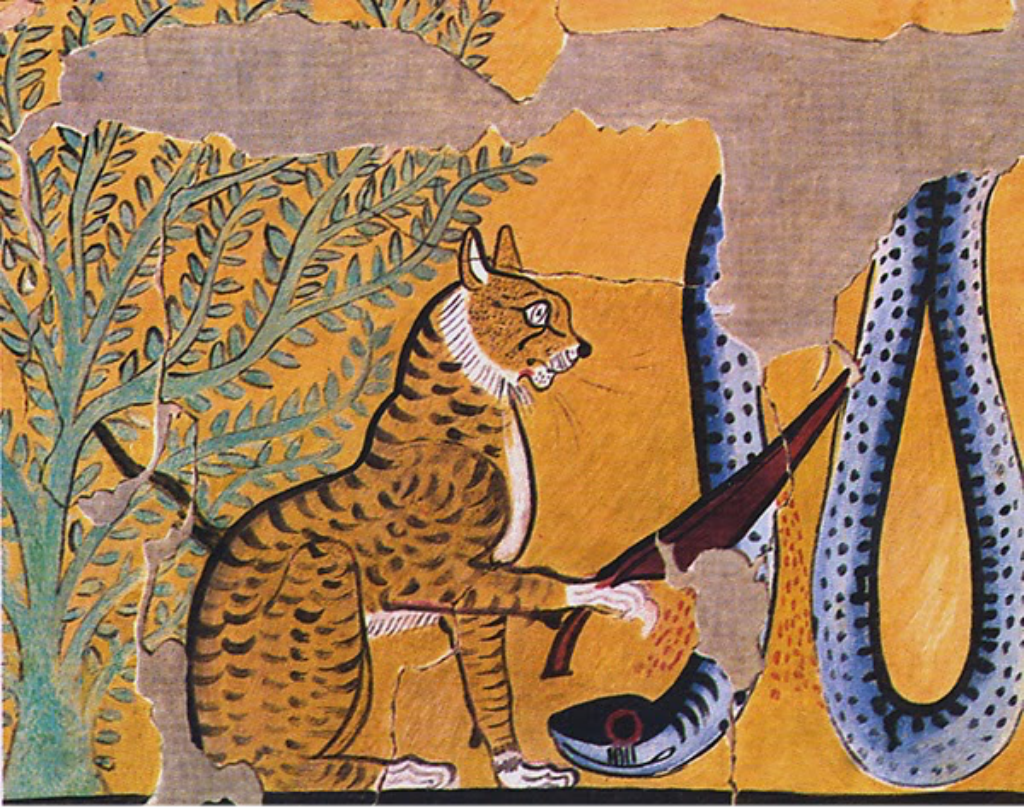
Egyptian Cat slaying the serpent Apep/Apophis
IMAGE LINKED: wikimedia Attribution 4.0 International (CC BY 4.0)
The Flesh is represented by the first regular step, in which we “trample” on the Tau Cross, while the Devil is represented by the snake, of whose existence we are reminded by the warning to “step off with the left foot first”.
Strictly, the candidate should enter the Lodge in the north, not in the west. The north is the place of darkness, and at birth we come out of darkness into physical light, and so in the spiritual journey.
This is done at Leeds. Out of darkness. Light. But the Light shineth in the darkness and the candidate comprehends it not, for the darkness of gross materialism is upon him until he kneels before the emblem of the divine light, the Volume of the Sacred Law.
The candidate is then challenged by the J.W. and the S.W.. The J.D. gives the password “Free and of Good Report” and the Wardens acknowledge its potency and bid him enter (Note “enter,”) as if he were outside a door on which he had knocked for admission.
This brings to our mind the three regular knocks.
For reasons which cannot be stated here, but which I will deal with more fully later, I suggest that the Entered Apprentice knocks remind us that man is Body, Soul and Spirit, and as in this stage of ignorance the Body is as important as the other two, the three knocks are all of equal duration.
Lest any misunderstanding, I would argue that in the process of creation the Spirit first comes from God, secondly, clothes itself with a Soul, and finally enters flesh.
Thus, the first knock represents the Spirit, seeking God whence it came, the second, the Soul, and the third, the Body.
To understand the full meaning of this passing by the Wardens one needs to consider why the candidate is being led round the Lodge.
There are two reasons given-
(1) To show that he is properly prepared.
(2) To show that he is a fit and proper person to be made a mason.
Being made a mason symbolises the birth of the Christ within, and before anyone can attain to this mystical re-birth he must have progressed some way along the road of evolution, have gained certain experiences, and learned certain lessons.
Think again of the password, “free and of good report”.
In the earlier stages, man is bound in materialism and earthly things, and he is ruled by his physical passions.
The candidate for masonry has begun to desire more than the material: he has felt the desire for spiritual growth and knowledge, and so has become “free. “
This is recognised as he passes the J.W. , who represents the Material Nature.
Next he approaches the S. W.- the representative of the Soul-and with the aid of the password is again bidden to enter.
Notice, having passed the material stage, when the Body reigns supreme, the Soul immediately, takes control, and presents the candidate to the W.M.-i.e. the Soul calls upon the Divine Spirit of God to give Light to the candidate.
The reply is significant, but is almost incomprehensible unless one understands the symbolical journey which the candidate has just taken, and one is apt to wonder why the questions which follow were not asked at the very beginning of the ceremony.
Really they are most important! They constitute the final testing of the candidate before he is bidden to advance towards the East to receive the Light, and enter on the pathway which begins with initiation and ends with God Himself.
Also they are very searching:
the candidate being required to declare solemnly that he comes seeking knowledge, not because others desire him to do so, nor yet for unworthy motives of personal gain, but because he is prompted from within by a genuine desire to help Humanity.
Then follows a hint that the journey upwards is by no means easy, and patience, perseverance, caution and courage are essential if we are to achieve our goal.
The candidate having replied satisfactorily, the S.W. is given permission to direct his guide, to instruct him in the proper method of advancing towards the Light.
This is by three squares which symbolise, not only uprightness of life, but also the three letters of the Great Name, Yod, He, Vau; Male, Female, and Variable.
In other words, God the Father, Mother, and child; and the fourth square is on the pedestal, which gives us the final He, or the complete name of Him we seek,- Jehovah, or J.H.V.H.
But the letter HE (pronounced Hay) is female, and its female aspect is emphasised by the position of the square. and compasses, which form a lozenge, itself a well known symbol for the Vesica Piscis, as all who study heraldry know; for in heraldry a woman’s arms are placed, not on a shield, as are a man’s, but on a lozenge.
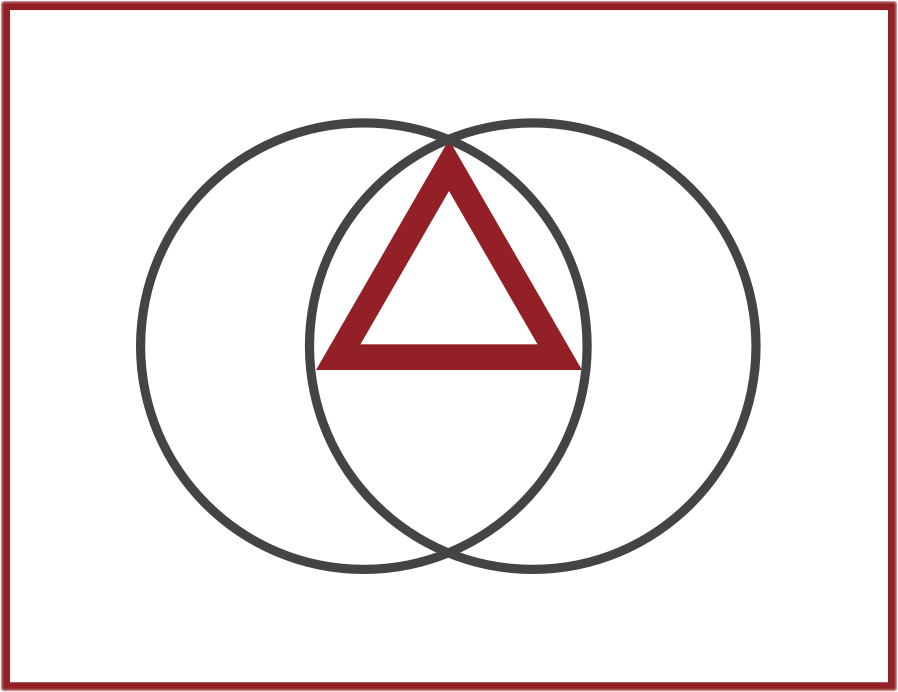
The area of the Vesica Piscis is formed by two equilateral triangles and four equal circular segments. In the drawing one triangle in red.
A great truth is here taught,-that each soul is part of the Divine whole and cannot be separated from the God we seek.
The candidate is only just about to emerge from the darkness of gross materialism, yet the God he seeks is within him.
True He is so veiled that many do not realise His presence, just as hundreds of candidate’s tread out the proper steps without ever realising their full significance, but those who rise above the material start on the path of return to God, and each stage that they pass as they progress along the path, reveals more fully His Nature and Being.
Notice, the candidate only treads three squares, -Yod, He, Vau; Male, Female, Variable; the fourth square needed to complete the whole is on the Pedestal.
This is particularly significant-never whilst in the flesh shall we be able fully to comprehend His nature.
No finite mind can comprehend the Infinite Deity.
It is only after we have left the first initiation long behind, and travelled far, that we can hope to obtain that transcendent knowledge which enables us to understand fully, the Nature and Being of Him Who is the beginning and end of all.
Again comes the reminder that Masonry is free ; entrance to the path can only be gained by those who hear the call from within.
No-one is coerced;-even at this late stage the candidate is given an opportunity to retire.
Thus he is asked if he is willing to take a serious Obligation, and on his agreeing to do so, the W.M. directs him to kneel on his left knee.
It should be noted that the 1. side of an individual is usually said to be “feminine”, and it is not surprising, therefore that in this, the first and feminine degree, the candidate is told to kneel on his left knee.
Notice the exact position! On the left knee keeping the right foot in the form of a square.
Now when you kneel on the left knee you must of necessity form a square at that knee, and, if you try it, you will find that you cannot keep the right foot in the form of a square without keeping the right knee in the form of a square also; so once again we get three square’s, with the fourth on the pedestal.
Thus we get another glimpse of the truth already hinted at, that each soul is part of the Divine whole, and cannot be separated from God.
The candidate is only just about to emerge from the darkness of ignorance, and yet he is instructed so to kneel that by his very attitude, -i.e. by forming three square’s with his body (the fourth being on the pedestal) he shows symbolically that the God he seeks is within.
Possibly the candidate is not conscious of His presence , any more than he realizes the significance of the steps by which he approached the pedestal , or of the posture he assumes as he kneels there at, yet verily God is with him, and within him, and, be the journey short or long, back to God he must return.
Once a Mason , ever a Mason , there is no such thing as straying permanently from the path.
Article by: J. S. M. Ward
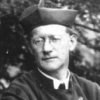
John Sebastian Marlow Ward (22 December 1885 – 1949) was an English author who published widely on the subject of Freemasonry and esotericism.
He was born in what is now Belize. In 1908 he graduated from the University of Cambridge with honours in history, following in the footsteps of his father, Herbert Ward who had also studied in history before entering the priesthood in the Anglican Church, as his father had done before him.
John Ward became a prolific and sometimes controversial writer on a wide variety of topics. He made contributions to the history of Freemasonry and other secret societies.
He was also a psychic medium or spiritualist, a prominent churchman and is still seen by some as a mystic and modern-day prophet.
Recent Articles: J.S.M Ward EAF Handbook

Book Review - The EA, FC, MM Handbooks
Essential reading for every Entered Apprentice, Fellowcraft, and Master Mason - these seminal books by J.S.M Ward are what every Mason needs!
more....
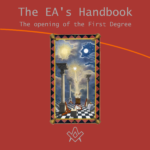 The Entered Apprentices Handbook P1 Chapter 1 - An interpretation of the first degree, the meaning of the preparation, symbolism, ritual and signs. Chapter 1, The opening of the First Degree |
 The Entered Apprentices Handbook P2 Chapter 2 - The Tyler or Outer Guard. The first thing that greets the eyes of the aspirant to our Order standing in front of the door with a drawn sword in his hand. |
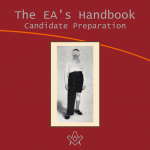 The Entered Apprentices Handbook P3 Chapter 3 - the Candidate being prepared by the Tyler. What we now have is a system by which the parts which have to be bare are made bare. |
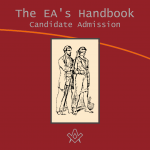 The Entered Apprentices Handbook P4 Chapter 4 - The candidate's admission into the lodge, is received on a sharp instrument. This signifies many things, one idea lying within the other. |
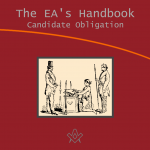 The Entered Apprentices Handbook P5 Chapter 5 - In all the ancient mysteries a candidate obligation was exacted to secure the secret teachings given in these mysteries which disclosed an inner meaning. |
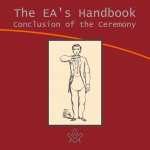 The Entered Apprentices Handbook P6 Chapter 6 - Having taken the first regular step the Candidate is given the Sign. This he is told refers to the Penalty of his Obligation, and no doubt it does, but it also seems to refer to something much more startling. |
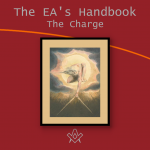 The Entered Apprentices Handbook P7 Chapter 7 - The candidate receives the charge, the first significant point is the phrase "Ancient, no doubt it is, as having subsisted from time immemorial". |
 In the second volume we are dealing with the degree of Life, in its broadest sense, just as in the first degree we were dealing with the degree of birth, and as life in reality is educational for the Soul, we are not surprised to find that throughout the whole degree the subject of education is more or less stressed. read the full series … |
 The third degree in Freemasonry is termed the Sublime Degree and the title is truly justified. Even in its exoteric aspect its simple, yet dramatic, power must leave a lasting impression on the mind of every Cand.. But its esoteric meaning contains some of the most profound spiritual instruction which it is possible to obtain to-day. read the full series … |
masonic knowledge
to be a better citizen of the world
share the square with two brothers

click image to open email app on mobile device


